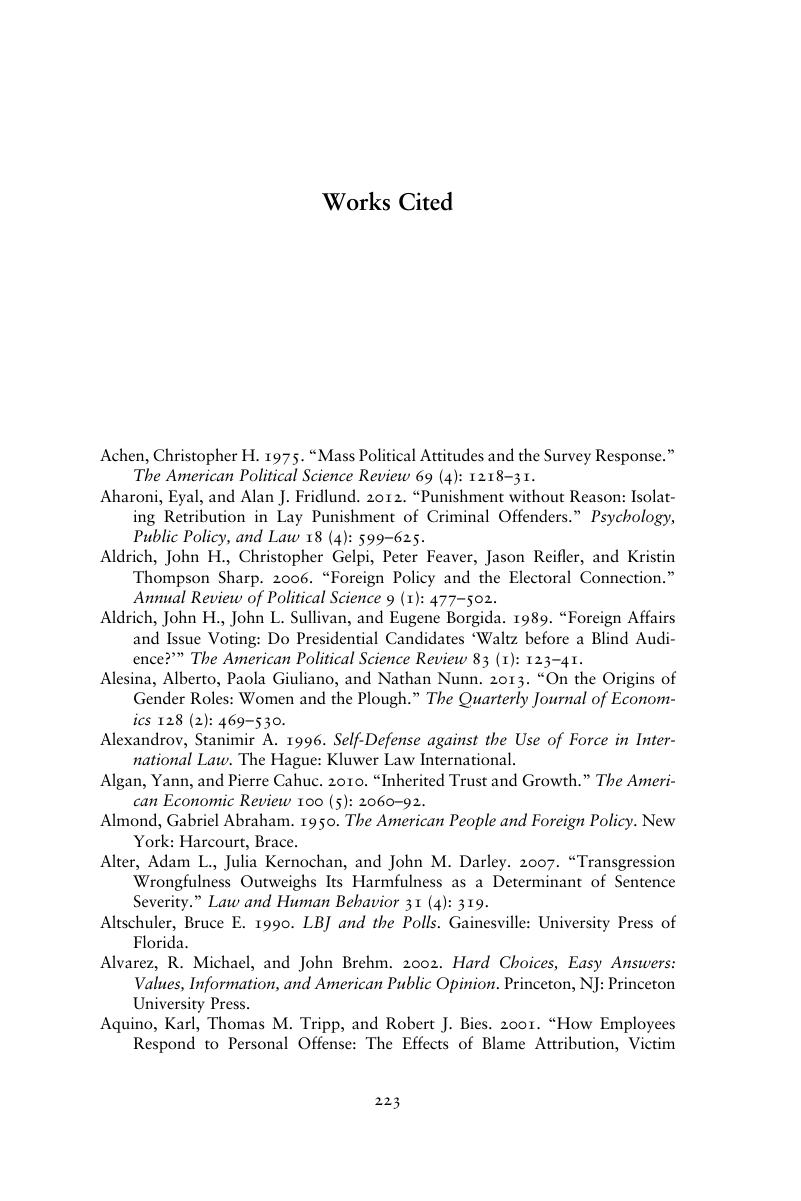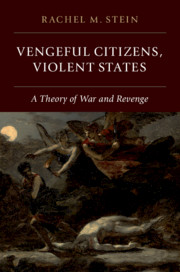Book contents
- Vengeful Citizens, Violent States
- Vengeful Citizens, Violent States
- Copyright page
- Dedication
- Contents
- Figures
- Tables
- Acknowledgments
- 1 Introduction
- 2 Linking Individual Vengefulness to State Violence
- 3 Wrongs Must Be Repaid
- 4 Framing War as Punishment
- 5 Dangerous Democracies
- 6 Conclusion
- Appendix
- Works Cited
- Index
- References
Works Cited
Published online by Cambridge University Press: 01 March 2019
- Vengeful Citizens, Violent States
- Vengeful Citizens, Violent States
- Copyright page
- Dedication
- Contents
- Figures
- Tables
- Acknowledgments
- 1 Introduction
- 2 Linking Individual Vengefulness to State Violence
- 3 Wrongs Must Be Repaid
- 4 Framing War as Punishment
- 5 Dangerous Democracies
- 6 Conclusion
- Appendix
- Works Cited
- Index
- References
Summary

- Type
- Chapter
- Information
- Vengeful Citizens, Violent StatesA Theory of War and Revenge, pp. 223 - 248Publisher: Cambridge University PressPrint publication year: 2019

